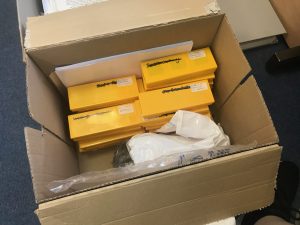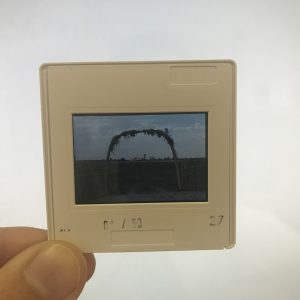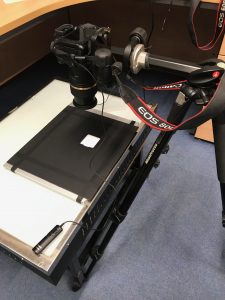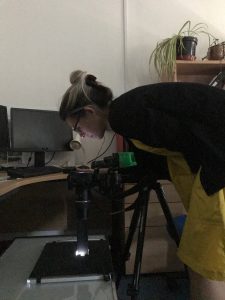Background
The Digitising Jemdet Nasr 1988-1989 project aimed to bring into the academic and public domain the surviving visual record of excavations at Jemdet Nasr, Iraq, conducted under the direction of Roger Matthews between 1988 and 1989. This project represents a renewed effort to reassess the results of the excavation, which was interrupted due to the unfolding political events in Iraq in 1990.
Thanks to a grant from the British Institute for the Study of Iraq, researcher Dr Mónica Palmero Fernández was able to adapt a method for digitising photographic film using a digital (DSLR) camera to digitise Kodachrome positive film (colour slides). For those interested in this method, there are several online guides and video tutorials, but we found the following to be the most helpful:
Kodachrome positive film is quite different from negative film. It was used for professional photography until its discontinuation in 2009 because of its ability to record images with more sharpness than substantive films. Indeed, Kodachrome’s sharpness and dynamic range remains difficult to emulate with digital processing and achieving this level of detail remained the biggest challenge in this project, especially for high contrast scenes in which Kodachrome displayed a far superior light and colour balance than the digitally produced copies due to Kodachrome’s relative high contrast which tended to wash out details in the scans. Kodachrome’s unique colour was highly regarded among professional photographers but when traditionally scanned, it has a tendency to show a blue colour cast.
As a first measure, the digitised photographs will offer a previously unseen record of the excavation, tying in with Matthews’ preliminary reports and publications (see Further Reading). It is hoped that the results of this digitisation project will constitute a further step towards a full reassessment of the excavations conducted at Jemdet Nasr in the 1920s as well as in the 1980s (see The Site). Legacy projects such as the one here described have received renewed interest in recent years, both due to the accumulation of unpublished archaeological fieldwork data since dating back even before 1990, and the recent reopening of legacy excavations in Iraq at important sites such as Nippur, al-Hiba, Girsu, Ur, or Uruk. Thus, this project, the DSLR digitising method that was developed for it, and the resulting digital archive here published constitute an important step forward in the process of reassessing and opening up archaeological research in Iraq to future generations that is both timely and necessary in light of recent extensive and systematic destruction of the country’s outstanding archaeological record at the hands of looters and terrorist organisations.
Image and Documentation Repository
The images contained on this website are low resolution edited copies of the original raw (CR2) files produced in the digitisation process. As part of our commitment to open data, the full archive of Jemdet Nasr Kodachrome slides is available through the University of Reading's Research Data Archive.
The link to the repository will be made available here once it goes live.
Publication
Full details of the method employed and how it was developed have been published in the peer-reviewed journal Internet Archaeology. Please feel free to contact Dr Mónica Palmero Fernández with any queries. She will be very happy to help. We hope that by sharing this information, we will help many other projects, archaeological units, university departments, and individuals finally digitise their film collections before they deteriorate, and thus contribute to widen knowledge and enhance the digital preservation of our discipline and our shared past.




